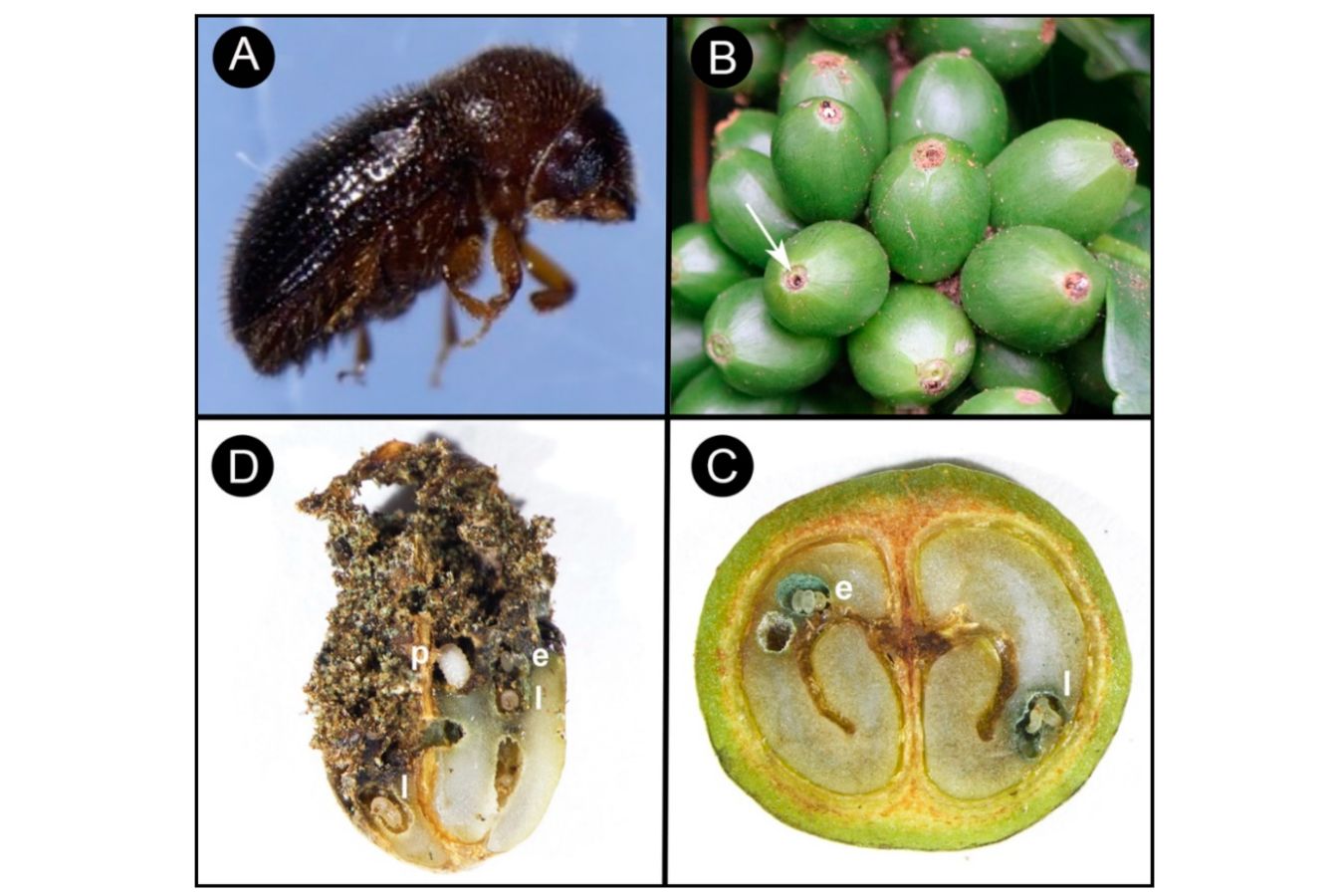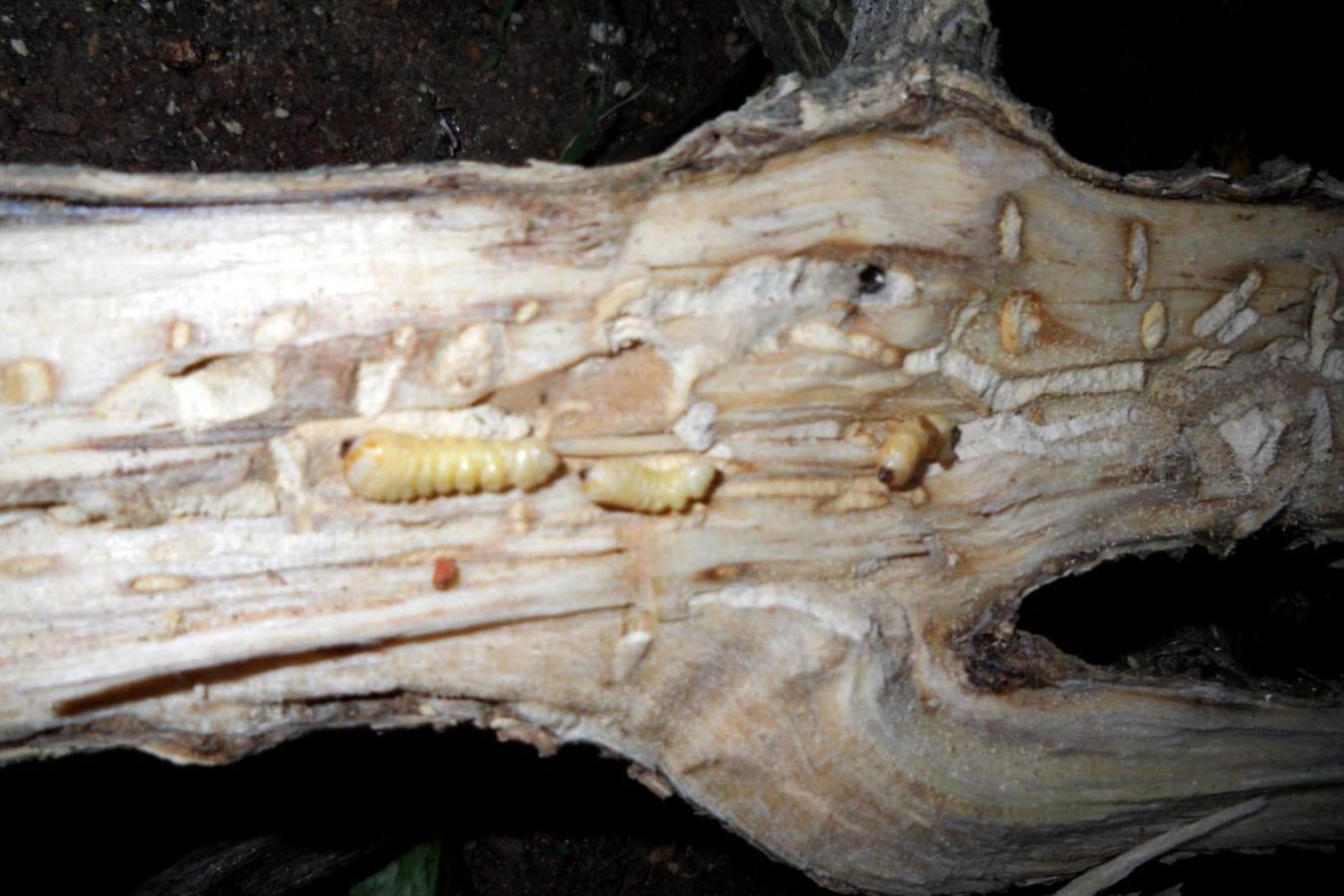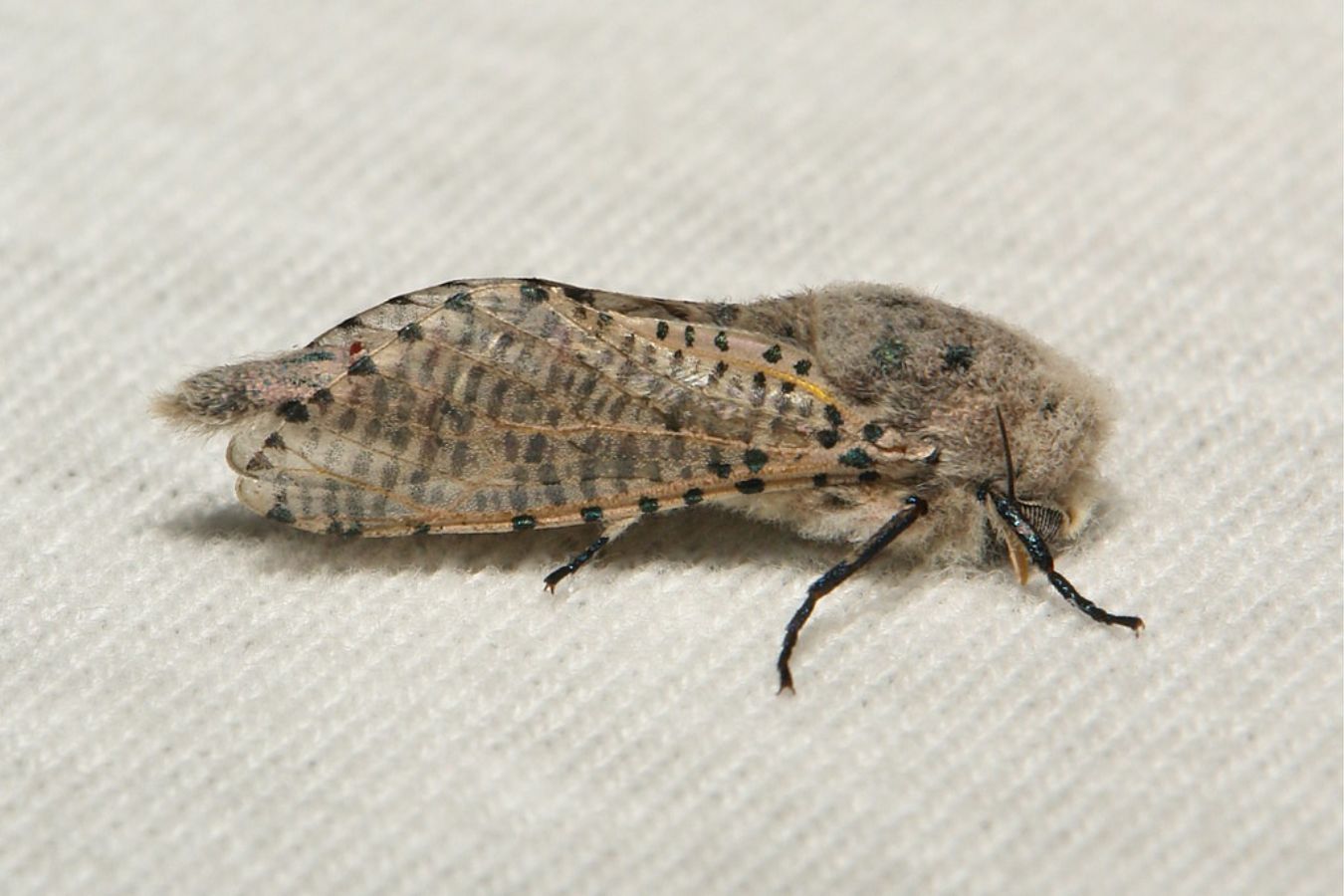
The Stem Borer Bores Coffee Branches: Coffee stem borers (also known as coffee branch borers) damage coffee gardens at almost every stage of their growth, being the larvae of one beetle species and one butterfly. (Often differentiated into pink stem borer and white stem borer). In today’s article, we will learn about the characteristics of these two types of worms and the most effective way to prevent them.
The harm of stem borers on coffee trees
The stem borer (branch borer) in the process of parasitizing on coffee trees will damage the vascular system and destroy the wood fibers, making the tree susceptible to breakage and truncation; water and nutrients cannot be transmitted up. The upper part of the stem leads to the yellowing of leaves, withering, and death.
Unlike the coffee branch borer, that only attacks the small branches and mainly causes damage at the coffee establishment stage, the stem borer usually attacks the main trunk and large branches and damages even the mature trees—Business phase. If not timely prevention is so that the caterpillars thrive, they can break out into epidemics, cause canopy defects, reduce productivity, and reduce growth. Young plants with low tolerance may die.

Some common symptoms when stem borers attack the tree:
- The entire branch or the upper part of the stem suddenly withers, turns yellow and loses its leaves.
- The lower part is still green, and many buds appear.
- The shell is cracked, and ridges emerge in a ring with holes 2-3mm in diameter.
- The hole made by the pink stem borer can also be seen extruding worm droppings, powdery, like sawdust.
- Sometimes the upper body is still green, but it’s stunted, and when it’s a strong wind, it often breaks horizontally.
- Splitting along the broken body shows long grooves; see if worms or pupae are inside.
Types of stem borers on coffee trees
As mentioned at the beginning of the article, the stem borer on coffee trees is mainly pink and white. The specific characteristics of each species are as follows.
A – White stem borer Xylotrechus quadripes
This is the larva of a beetle species in the hair-clippers family, scientifically known as the Xylotrechus quadriceps. The average life span is 6-8 months; the life cycle is usually divided into four stages
- Eggs: 30-32 days
- Young caterpillars (larvae): 60 – 120 days
- Pupae: 30-35 days
- Adults: 25-30 days
The main harmful stage is the larval stage, shaped like a worm; the body is divided into many segments, the head is black, and the tail is more petite. Adults have rigid wings, many black and white stripes on the wings, long antennae, and three pairs of legs. After successful mating, they will lay eggs in cracks in the bark. After hatching into larvae, the eggs seek to burrow into the trunk and live until they develop into pupae.
White-bodied coffee stem borer Xylotrechus quadriceps
B – Pink stem borer Zeuzera coffeara
Unlike the white stem borer, the pink stem borer is the larval stage of a butterfly with the scientific name Zeuzera coffee, the adult (called moth) is white on the wings with many blue dots, and the body is long. 20-30mm, with many white hairs. Young caterpillars are pink or red, 15-30mm long, and live in the trunk. Eggs are usually laid in strips on young shoots, undersides of leaves, and stems; each adult can lay 400-2000 eggs.

After hatching into worms, the eggs move to positions such as toothpicks and young branches and chisel into the trunk to live. Before pupating, the caterpillar undergoes six molts; each molt will turn to damage on larger branches/stems.
In living in the trunk, the pink stem borer often extrudes excrement, so it is easy to see with the naked eye.
Coffee stem borer Zeuzera coffee
Measures to control coffee pests
Because the method of damage and the time of damage of the two stem borers have many similarities, the control methods are also similar. Including farming methods and chemical measures
A – Cultivation method
- Plant suitable shade trees to reduce light for the coffee garden. Can grow avocado wax, durian, and other valuable trees to improve income.
- Prune branches in balance, suitable for each coffee variety, limiting exposure to the body.
- If a dead branch is detected, it should be cut off immediately, and use manual measures to catch worms (iron hook, wire …)
- Destroy infected body parts to remove any pupae, larvae, and eggs left on them
- Regularly check and visit the garden too early to detect plants being attacked by pests for timely handling.
- Protects natural enemies of stem borers such as Apenesia Sahyadri Azevedo & Waicert bees.
- In the season of solid growth of worms, at night, you should use light traps and sticky traps to trap adults.
In addition, people should grow coffee with high-yielding, strong-growing, high-yielding varieties to increase the resistance to pests and diseases and the recovery of the coffee garden. The best high-yielding coffee varieties today can be mentioned as dwarf green, string, and eakmat institute coffee varieties such as TR4, TR9, and TRS1.
B – Chemical method
In addition to applying reasonable farming methods, the intervention with chemical drugs (pesticides) also has a good effect on the prevention and treatment of stem borers. Chemical drugs containing active ingredients Chlorpyrifos Ethyl + Cypermethrin, Diazinon, Fenobucarb, and Dimethoate… showed the best effect. In addition to stem borer control, it prevents coffee branch borers, coffee mealybugs, and coffee scale aphids…
Some insecticides for coffee stem borers:
- Drugs containing active ingredients Chlorpyrifos Ethyl + Cypermethrin: Tungcydan 55EC
- Diazol 10G. Active ingredient: Diazol 10G
- Medicines containing the active ingredient Fenobucarb: Nibras
- Pills containing the active ingredient Dimethoate: Bini 58
Hopefully, with this article, you will have more information to handle the stem borer disease on coffee trees thoroughly, the report is mainly compiled from the writer’s experience, so there may be many shortcomings; hope added. Thank you for following.